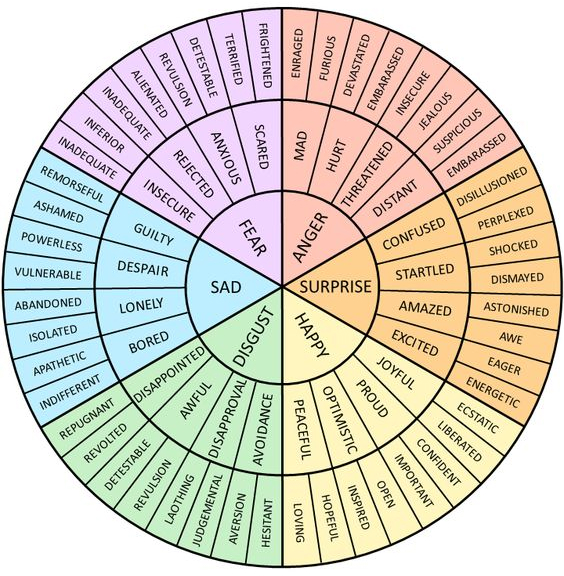
Emotions in Decisions: Using Emotion Chart & Emotion AI Tools
Emotions play a crucial role in our decision-making process, influencing the choices we make in different aspects of life. Research indicates that individuals with impaired emotional centers in their brains may encounter difficulties in making decisions, underlining the essential role emotions play in evaluating options and guiding choices. Understanding and acknowledging the impact of emotions can provide valuable insights when considering and making decisions.
From career opportunities to relationships, and from financial decisions to personal well-being, understanding the interplay between emotions and decision-making can lead to more informed choices and improved outcomes. In this blog, we will explore how emotions shape decision-making in various scenarios and provide insights on how to navigate them effectively.
Balancing Emotions in Choices
Imagine receiving two job offers simultaneously. One promises higher pay and career growth, while the other offers a better work-life balance. When faced with a job offer, emotions can range from overwhelming excitement to a cloud of uncertainty. Anticipating career growth and financial security can evoke positive emotions, while choosing between offers and concerns about work-life balance may trigger negative emotions.
Evaluate each offer based on goals, seek advice, and journal your thoughts for a more rational decision to strike a balance.
Practicality versus Passion
When buying a home, emotions can range from sheer elation and passion to considerations of practicality. You may feel a sense of fulfillment and joy as you achieve a personal goal and establish strong social connections. Achievements drive positive emotions, while financial constraints and practicality introduce pragmatism.
Strike a balance between emotions and practicality by evaluating finances, reviewing documents, and seeking professional advice to make an informed decision.
Cultivating Healthy Relationships
Emotions shape relationships, from love and happiness to conflict and disappointment. Positive emotions like love, connection, and happiness are the foundation of healthy relationships, fostering satisfaction and effective communication. However, conflicts, ineffective communication, unmet expectations, and external stressors can trigger negative emotions like anger, frustration, and disappointment.
Nurturing relationships requires open and honest communication, active listening, empathy, and addressing conflicts constructively. Seeking couples counseling, if needed, and prioritizing shared experiences can strengthen the emotional bond.
The Power of a Positive Mindset
Think about the times when you've felt motivated and determined to exercise regularly. Positive emotions like excitement, satisfaction, and a sense of accomplishment have likely fueled your commitment. In contrast, feeling uninspired, experiencing physical or mental fatigue, or struggling with a lack of purpose can result in negative emotions such as boredom, disinterest, and exhaustion, which may hinder your progress.
Set achievable goals, find activities that bring you joy and fulfillment, and surround yourself with a supportive community to maintain a positive mindset towards health. Engaging in self-care practices, managing stress, and seeking professional guidance can help you overcome emotional hurdles and stay on track.
Making Sound Money Decisions
Financial decisions are often emotionally charged, ranging from confidence and optimism to anxiety and uncertainty. Positive emotions like confidence and excitement may arise from successful financial planning, meeting goals, and understanding investment opportunities. Conversely, experiencing financial setbacks, fear of making misguided decisions, and economic uncertainty can trigger negative emotions such as worry, anxiety, and uncertainty.
Seek guidance from financial advisors, educate yourself about investment strategies, and diversify your portfolio to make sound financial decisions. Developing a solid financial plan and regularly reviewing and adjusting it can help alleviate anxiety and promote a more confident approach to financial decision-making.

Emotions have a significant impact on our decision-making process. By understanding the interplay between emotions and decision-making in various scenarios, we can develop strategies to regulate and balance our emotions, leading to more informed choices and improved outcomes.
One useful tool for understanding and managing emotions is an emotion chart. This chart visually represents a range of emotions, including not only basic emotions like happiness, sadness, anger, and fear but also more nuanced emotions like contentment, frustration, surprise, and compassion. It provides individuals with a comprehensive framework to identify and label their feelings accurately.

Emotion AI tools leverage these emotion charts to enhance the user experience and improve their understanding of emotions. By analyzing facial expressions, tone of voice, and other behavioral cues, these tools can detect and interpret users' emotions constantly.
These tools can tailor interactions, content, and suggestions based on the individual's emotional state by referencing the emotion chart. Emotion AI technology significantly enhances the user experience by delivering more customized and engaging experiences that resonate with the user's emotions.

In addition to recognizing the role of emotions and seeking support, utilizing tools like the emotion chart and Emotion AI can further enhance the decision-making process. The emotion chart provides individuals with a visual representation of emotions, aiding in understanding and regulating their emotional states. Emotion AI tools, on the other hand, leverage advanced technology to analyze and interpret emotions, allowing for personalized and relevant responses. By integrating these tools into the decision-making process, individuals can navigate life's complexities with a more comprehensive understanding of their emotions.